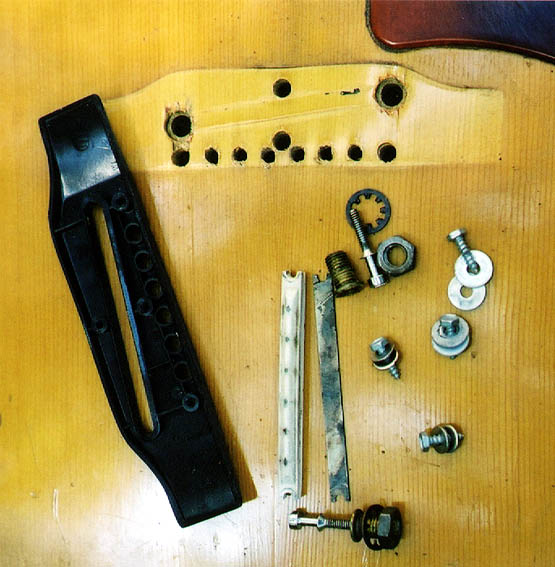Hi everybody,
I'm not a luthier but I've got a question for the people that have the answers (that would be y'all-yes I'm from Savannah, Georgia).
I just got a 1966 Gibson J-50 with the "famous" adjustable bridge.
It sounds good now but I've got a gut feeling that a standard rosewood bridge with a bone saddle would really bring it to life.
Does anybody have any direct experience to compare the before and after sound in this kind of guitar?
Also, who is really good at this kind of work?
Thanks so much for your time and expert opinions.
Chuck
Views: 6475
Replies to This Discussion
-
Would it sound better converted it to a standard bridge? Almost certainly a little bit. Would it devalue the instrument if you ever wanted to sell it? Undoubtedly. Count your blessings that the bridge isn't made out of plastic;)
-
Yeah.... "what Ted said". I usually jump at the chance to tell customers that replacing any adjustable bridge will improve the tone.... a solid, unbroken, path between the vibrating string and the top will only make things better.
That said, you have to weigh what the "intactness" of an original '66 J50 is worth to you. If you plan on holding onto it for the eventual collector's value, then change nothing. If you're simply looking for the best tone you can get out of your guitar, then it's full-steam ahead on the change-out.
All things considered, I'd say that if you can live with what you've got.... leave it alone.
-
We convert old Gibsons like this in my shop from time to time and I do think they sound better with a fixed bridge. What we do to avoid permanently altering the bridge is simply remove the saddle and the height adjustment posts. We then fill the wide saddle slot with a rosewood plug that is a tight press fit - no glue. This plug is routed (actually off the instrument) for a standard 1/8" wide saddle slot and a bone saddle is fit into it. It is a clean operation that works and sounds good and takes 15 minutes to reverse.
-
I think that value is ultimately up to the buyer. I would prefer to have one that already has a solid saddle rather than the adjustable setup and would consider it value added to the instrument and a issue I wouldn't need to deal with once I go it. Authenticity is on my list of things to consider but it isn't #1. . The point is that there are some of us that believe that the "real" value is in how the guitar plays, sounds and looks in that order. Collectible falls into the mix somewhere around the looks department.
Ned
-
I am also not a luthier, not even a novice.
This is what I did on my Ibanez Hummingbird replica - see the picture.
It's one piece bone. - Attachments:
-
I've done a dozen or so of these modifications. The improvement ranges from noticeable to astounding. Not only do you likely improve the transfer of energy from the string, more importantly you can really nail down correct intonation.
I've taken to removing the bridge entirely and making a new bridge. I leave the old bridge in the case with the accompanying hardware. I suggest that this increases the value of the instrument.
-
1960's J50's seem to sell on Ebay lately for an average of $1800 to $2000, give or take. I've seen others come and go for buy it now values of 24 or $2,500 with no hits. Maybe they'll go up in value some day but collector value is not so good for the 60's J50 flat tops. I'm in Robert's camp on this and feel that the improvements make the instrument more desirable.
-
I like Todd's fix for its reversability.Great idea! And we already know the tone will improve big time.Eugen's is cool also.I'd go for it.
-
Todd's & Eugen's are both good.I took the adjustable bridge and all metalwork I could off an Epiphone Frontier
and simply put a bone saddle in the slot.Loads of room for intonation adjustments!
I've found that if the actual adjustable saddle is bone,rosewood or ebony,changing it won't make much difference-it's the so-called "ceramic"or bent tin that kill the tone.I tried a Tusq adj saddle on a Frontier and an El Dorado-
"the results were disappointing"
-
I used to be a human being with a photo of me on here.Now I'm a Gibson mandolin like almost everybody else.
-
Do the whole replacement, not just the implant where the saddle came out. Under that bridge is a a pair of mounting plugs that really act as dampers.

If you pull the whole old bridge, you can get rid of that junk and clean up the bridgeplate and put a simple bridge on. Once you do, the guitar will sound a lot better. I've done this procedure dozens of times over the years, check here, always an improvement.
© 2025 Created by Frank Ford.
Powered by
![]()